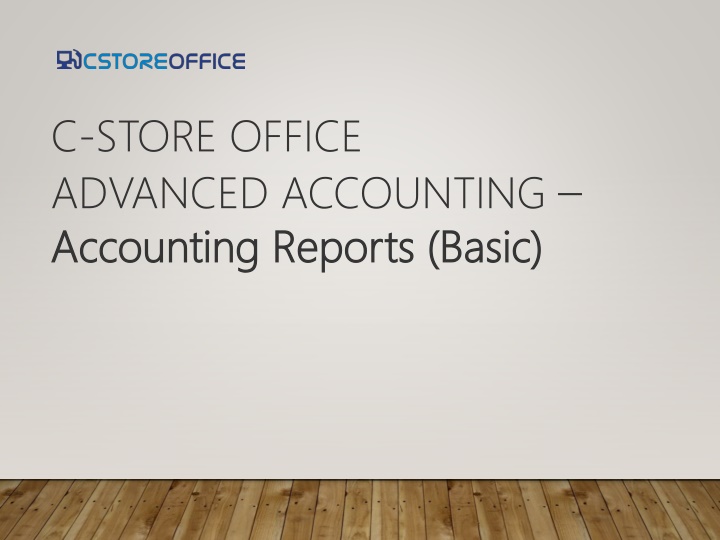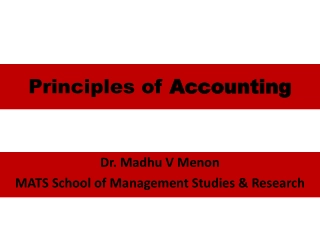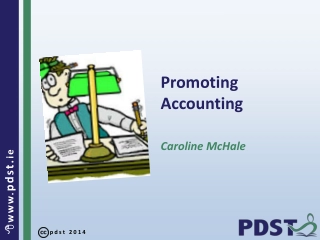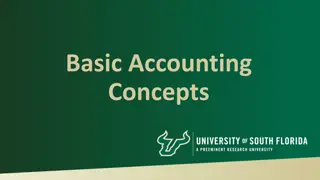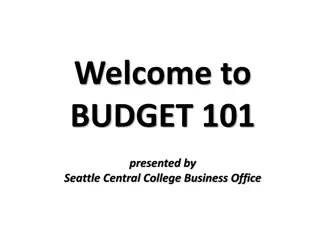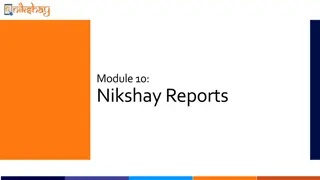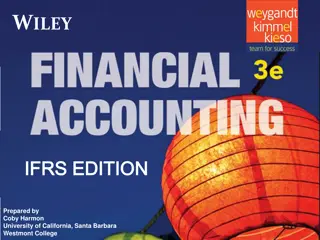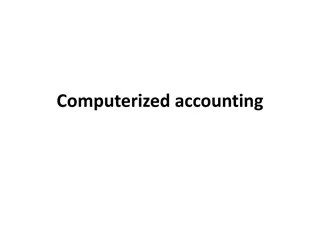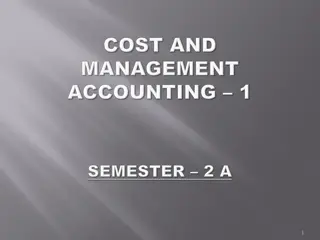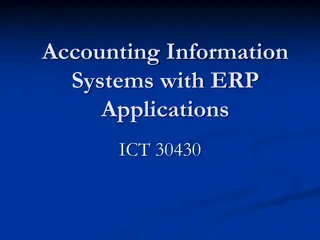Overview of Basic Accounting Reports
This content provides a brief overview of essential accounting reports such as Profit & Loss, Balance Sheet, Cash Reconciliation, General Journal, and more in a comprehensive manner. Understand the significance and purpose of each report in managing financial data effectively.
Download Presentation

Please find below an Image/Link to download the presentation.
The content on the website is provided AS IS for your information and personal use only. It may not be sold, licensed, or shared on other websites without obtaining consent from the author.If you encounter any issues during the download, it is possible that the publisher has removed the file from their server.
You are allowed to download the files provided on this website for personal or commercial use, subject to the condition that they are used lawfully. All files are the property of their respective owners.
The content on the website is provided AS IS for your information and personal use only. It may not be sold, licensed, or shared on other websites without obtaining consent from the author.
E N D
Presentation Transcript
C-STORE OFFICE ADVANCED ACCOUNTING Accounting Reports (Basic) Accounting Reports (Basic)
AGENDA AGENDA How to find the Accounting reports Brief overview of each report: Accounting Profit & Loss Balance Sheet Cash Reconciliation Consolidated General Journal Intercompany Transfers Operating Profit Estimates (Profit &Loss) Statement of Cash Flow Trail Balance
WHERE ARE THE ACCOUNTING REPORTS LOCATED IN C WHERE ARE THE ACCOUNTING REPORTS LOCATED IN C- -STORE OFFICE STORE OFFICE
ACCOUNTING PROFIT & LOSS REPORT ACCOUNTING PROFIT & LOSS REPORT A profit and loss statement (P&L) is a financial statement that summarizes the revenues, costs and expenses incurred during a specific period of time, usually a fiscal quarter or year. These records provide information about a company's ability or lack thereof to generate profit by increasing revenue, reducing costs, or both
BALANCE SHEET BALANCE SHEET The balance sheet provides information on what the company owns (its assets), what it owes (its liabilities) and the value of the business to its stockholders (the shareholders' equity) as of a specific date. It's called a balance sheet because the two sides balance out. This makes sense: a company has to pay for all the things it has (assets) by either borrowing money (liabilities) or getting it from shareholders (shareholders' equity).
CASH RECONCILATION CONSOLIDATED REPORT CASH RECONCILATION CONSOLIDATED REPORT This report is combining all of the current stations under one company and totaling their specific categories
GENERAL JOURNAL REPORT GENERAL JOURNAL REPORT The journal is where double entry bookkeeping entries are recorded by debiting one or more accounts and crediting another one or more accounts with the same total amount. The total amount debited and the total amount credited should always be equal, thereby ensuring the accounting equation is maintained. In accounting and bookkeeping, a journal is a record of financial transactions in order by date
INTERCOMPANY TRANSFERS INTERCOMPANY TRANSFERS This report keeps track of money movements between stations under the same company
OPERATING PROFIT ESTIMATES (PROFIT & LOSS) OPERATING PROFIT ESTIMATES (PROFIT & LOSS) Operating profit is the profit earned from a firm's normal core business operations. This value does not include any profit earned from the firm's investments, such as earnings from firms in which the company has partial interest, and the before the deductions of applicable interest and taxes owed. Operating profit is calculated using the following formula: Operating Profit Operating Profit = Operating Revenue - COGS - Operating Expenses - Depreciation and Amortization
STATEMENT OF CASH FLOW STATEMENT OF CASH FLOW Complementing the balance sheet and income statement, the cash flow statement (CFS) - a mandatory part of a company's financial reports since 1987 - records the amount of cash and cash equivalents entering and leaving a company. The CFS allows investors to understand how a company's operations are running, where its money is coming from, and how it is being spent
TRIAL BALANCE TRIAL BALANCE A trial balance is a bookkeeping or accounting report that lists the balances in each of an organization's general ledger accounts. (Accounts with zero balances will likely be omitted.) The debit balance amounts are listed in a column with the heading "Debit balances" and the credit balance amounts are listed in another column with the heading "Credit balances." **The total of each of these two columns should be identical.
TRAINING CENTER TRAINING CENTER For additional testing on what you have learned, please refer to our new Testing Center . To access this new feature, click the help icon, and then select Testing Center Testing Center. For additional information, please refer to the Accounting Reports section at Petrosoft Cloud Help. Accounting Reports. Go to C C- -Store Office Store Office > Reports Reports > Accounting Reports
THANK YOU FOR YOUR TIME! Get in Touch www.cstoreoffice.com www.cstoreoffice.com Petrosoft Petrosoft LLC 290 290 Bilmar Bilmar Drive Pittsburgh, PA Pittsburgh, PA 15205 1.412.306.0640 1.412.306.0640 LLC Drive 15205
